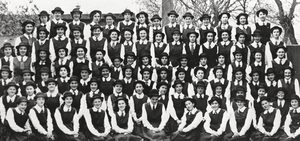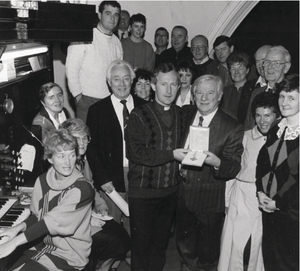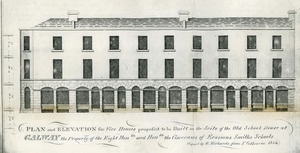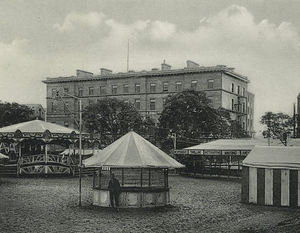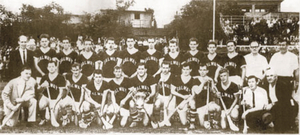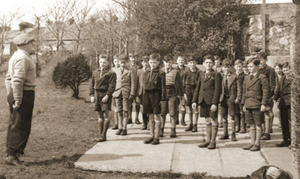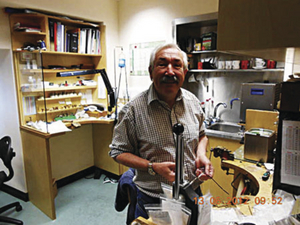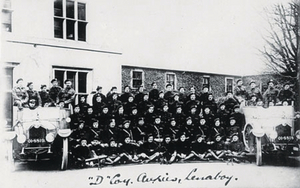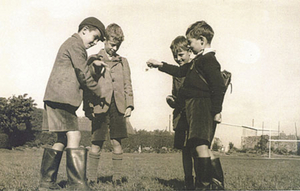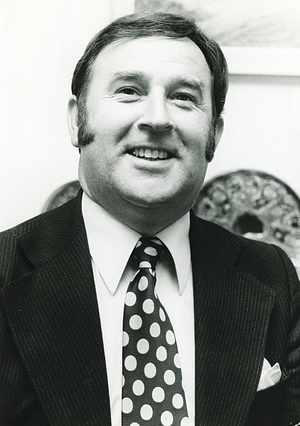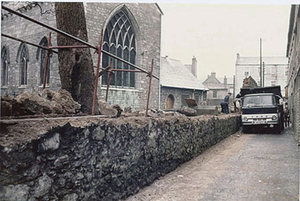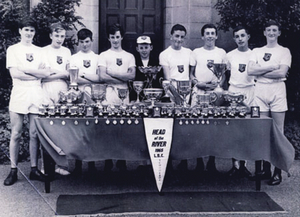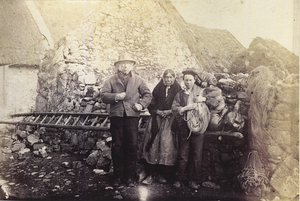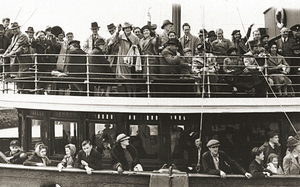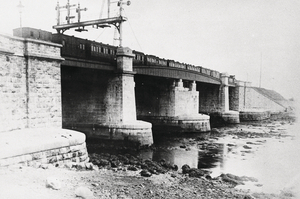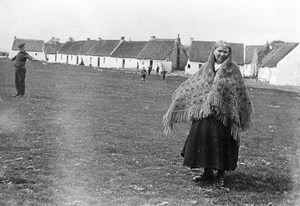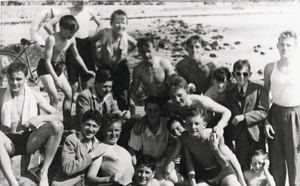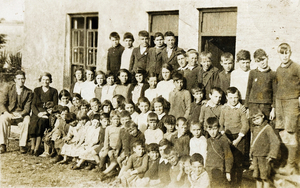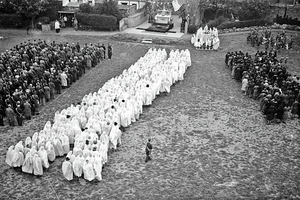Calling all ‘Pres’ past pupils
Thu, Jan 08, 2015
Two hundred years ago (on October 27 1815) the first Presentation Sisters came to Galway and founded the first Catholic schools for girls in the city. They moved in to Kirwan’s Lane, then to Eyre Square for three years, before settling into a vacant house in the suburbs, which has been known as the Presentation Convent ever since.
Read more ...Memories of Sonny Molloy
Tue, Dec 23, 2014
Sonny (whose real name was Joseph) was born 89 years ago, one of six children to Patrick and Mary Molloy of St Brendan’s Road in Woodquay. He went to the ‘Mon’ where he learned to play football among other things. A match report in a local paper once carried the headline “Five Goal Molloy”, a fact which he managed to drop into conversation many times over the years. Chatting with him could be unnerving as he laced his chat with colourful sayings like “Long drawers”, “Bring up the bucket”, “Th’oul suit turned well”, ’44 short’, “I hate small men”, and of course his famous draper’s mantra, “We have your size”.
Read more ...High Street facades
Thu, Dec 18, 2014
Galway Grammar School was founded by Erasmus Smith about 1667 in a temporary premises and it moved to High Street about 1684. An entry in the records for January 22 1684 reads: “That Dr. John Coghill be desired to write unto Mr. Patrick Mains in Gallaway that he will more particularly inspect the house there belonging unto Sir Robert Ward concerning the necessary repairs to make it convenient for a school and a commodious dwelling for the schoolmaster and usher and for boarders lodgings that it will amount to.”
Read more ...A postcard of Toft’s Amusements
Thu, Dec 11, 2014
The Toft family were associated with Eyre Square for many years since 1883 when they first brought a carnival there.
Read more ...Galway three-in-a row teams
Thu, Dec 04, 2014
The Galway senior football team played in four All-Ireland finals in a row from 1963 to 1966. They lost the first one to Dublin but achieved a magnificent three in a row in 1964, 1965, and 1966. They were not the only Galway team to do so as the New York Galway senior hurling team managed a similar treble, winning the New York Championship in 1964, ‘65, and ’66.
Read more ...Calling all Jes past pupils
Thu, Nov 27, 2014
Like most national schools in the 1950s, the bunscoil in Coláiste Iognáid (the Jes) used to have a little break, known as a ‘sos’, mid morning. The lowest class in the Jes was Bun Rang II and they had a charismatic teacher named Power, who was known only as ‘An Paorach’. This man was a Gaeilgeóir who taught everything through Irish, but made it fun. You had to learn songs like ‘Beidh Aonach Amárach i gContae an Chláir’ or ‘Trasna na dTonnta dul siar, dul siar’. Weather permitting he would use the period of the ‘sos’ to take his pupils out drilling around the pitch, always carrying a whistle and issuing his commands in Irish.
Read more ...Hartmann’s of Galway
Thu, Nov 20, 2014
The first member of the Hartmann family to arrive in Galway was Alphons. His older brother Joseph was already established in business in Limerick. Joseph went back to Triburg in the Black Forest in Germany in 1895 to get married, and when he and his bride were about to return to Ireland, his father asked him if he would take Alphons with him.
Read more ...The Auxiliaries in Galway
Thu, Nov 13, 2014
As the guerrilla war attacks by the Irish Volunteers on the RIC began to escalate in 1919, the British government recruited World War I veterans as a complementary force to the RIC. It advertised for men willing “to face a tough and dangerous task”. These were the Black and Tans. A further campaign was launched to recruit former army officers who were specifically formed into counter insurgency units known as the Auxiliaries or ‘The Auxies’. They wore distinctive ‘Tam O’Shanter’ caps. One of these units, D Company, was stationed in Lenaboy Castle and in ‘The Retreat’ in Salthill.
Read more ...Was James Hack Tuke the Oskar Shindler of his day?
Thu, Nov 06, 2014
A surprising rescuer of the Tuke assisted emigration scheme from the west of Ireland came from the London government. After the first group of 1,315 people had sailed from Galway for America on April 28 1882, the Tukes’ emigration fund was practically exhausted. Yet the demand for places grew each day. Now more than 6,000 applications, mainly from the Clifden area, but also from Belmullet, Newport and Oughterard, poured into the Clifden union where James Hack Tuke had his office. While poverty and famine remained endemic in the west of Ireland, people with spirit must have felt that the day-to-day grind was never ending. The threat of another Great Famine was very real. They wanted a new life.
There was also a growing realisation within government that the provision of relief only was not the long-term solution to the problems of failed harvests, poverty and evictions. Assisted emigration at least gave some people a chance for a fresh start. Matters were at a standstill until Lord Spencer, the lord lieutenant of Ireland, came to Galway and Mayo in that summer. He witnessed first hand the congestion and destitution, and talked to Tuke about his emigration endeavours. Spencer was clearly impressed. As a result the government granted £100,000 to the scheme, and more was to follow. As well as contributions from benefactors, Tuke was back in business. Until the scheme ended in 1884, a bare three years in duration, about 9,500 people were helped to emigrate to America and Canada.
Read more ...The game of conkers
Thu, Oct 30, 2014
In the days before television, computers, or iPads, children often had to be inventive to amuse themselves. When it came to street games they were well able to use their imaginations as they played games like Jackstones, O’Grady Says Do This, Tops, Queenie Queenie, Rover Red Rover, One Two Three Redlight, Jack Jack Show the Light, London Bridge is Falling Down, Cad, skipping, hobbies, marbles, and slides (in winter). Another traditional seasonal game, usually played in September, October, and November, was ‘conkers’ using the seeds of horse chestnut trees. The term conker applies to the tree as well as the seed and there are several theories as to where the name came from. The nut is found in a prickly case which falls from the tree. It is drilled using a nail, sometimes a compass (be careful not to stick yourself!), and then a piece of string is run through it with a knot tied at one end to secure the conker.
Read more ...Remembering Foggy Spelman
Thu, Oct 23, 2014
Paschal Spelman may have been given that name at birth, but to the many thousands of people (especially old Galwegians) he entertained down the years, he was simply known as ‘Foggy’.
Read more ...Lowering the old wall
Thu, Oct 16, 2014
Church Lane was a dark place up until 1983 because of the very large high stone wall that ran the length of it. This was part of a wall that was built around St Nicholas’ Collegiate Church and its adjoining graveyard. The removal of most of the wall and its replacement by the railings that once surrounded Eyre Square was one of the earliest ideas for improving Galway as it prepared for the Quincentennial in 1984. This project transformed the area around the church, making it much more attractive and opening it up to the passing public. It let a lot of light into the city centre.
Read more ...Eighty years of Jes rowing
Fri, Oct 10, 2014
Maurice Semple’s book Reflections on Lough Corrib has a very good section on the history of rowing on the river and lake. The first clubs were formed in the mid 19th century, and competitive rowing has been a feature of Galway life since. A number of pupils in Coláiste Iognáid came together in October 1934 to ask the school if it would consider setting up a Jes Rowing Club. Happily, it did, and thus began a history of great achievement which continues to the present day.
Read more ...A Claddagh family, one hundred and fifty years ago
Thu, Sep 18, 2014
The title of this photograph is “A Claddagh Family” and it dates from c1865. It is from an album discovered some time ago in Chetham Library in Manchester in which all of the photographs are of locations in Galway city or county. It is interesting to note that a photograph of this exact group in a different pose, almost certainly taken on the same day, is in a different album in the National Library of Ireland. This second image is titled “The King of the Claddagh” but we do not know his name.
Read more ...War victims come to Galway
Thu, Sep 04, 2014
At 11.15am on September 3 1939, Neville Chamberlain went on radio to announce that Britain had declared war on Germany. Hitler was still hopeful of a diplomatic resolution and to this end, he issued strict orders for U-boats to follow the Prize Regulations under which attacks on passenger liners were prohibited. Unfortunately, the first ship that was sunk by a U-boat was the SS Athenia, which was carrying 1,418 passengers and crew. She was about 200 miles off the west coast of Ireland at the time.
Read more ...The Lough Athalia railway bridge
Thu, Aug 28, 2014
The coming of the railway line from Dublin to Galway was one of the most significant events in the history of our city in the 19th century. It opened up the city and its environs in a commercial and in a tourist sense, making Galway accessible to the rest of the world. It was a major engineering achievement, regarded as the first indication of Galway’s future greatness both as a mercantile and manufacturing city.
Read more ...The Gunna Mórs
Thu, Aug 21, 2014
This area of the Claddagh was known as ‘the Big Grass’ or ‘the Green Grass’. It was the one open space of ground in the village and faced what is known as the Swamp today. It was very marshy, though some of it was used as a playground by local children, and it was also where the Claddagh Races took place.
Read more ...Swimming in Salthill
Thu, Aug 14, 2014
Competitive swimming really began in Galway with the formation of two swimming clubs, Blackrock SC and Galway SC. Both were formed in 1930.
Read more ...Kiloughter long ago
Thu, Aug 07, 2014
This photograph of Carrabrowne National School was taken in 1936 and shows, back row, left to right: Pete Keane, Carrabrowne; Jimmy O’Brien, Kiloughter; Davey Corcoran, Carrabrowne; Willie Glynn, Kiloughter; Francis Corcoran, Carrabrowne; Stephen O’Brien, Carrabrowne; Mattie Casserley, Kiloughter; Willie Higgins, Ballindooley; Stephen O’Brien, Kiloughter; Mickey McGrath, Ballindooley; Tom Costelloe, Kiloughter; and Stephen Birmingham, Kiloughter.
Read more ...The Jesuit church
Thu, Jul 31, 2014
On this day, July 31, in 1863, “The new Church of St Ignatius on the Sea Road in the vicinity of the city was dedicated by the Most Rev Dr McEvilly, Lord Bishop of Galway. Sea Road is one of the most fashionable and frequented thoroughfares in the suburbs of our city. The Church, which was commenced in 1861, is now complete with the exception of the organ, altar and some minor internal decorations; and we have no doubt the zeal of the faithful will only require such a desirable opportunity of enabling the Jesuit Fathers, whose excellent judgement in these matters is fully acknowledged, to complete the required improvements, and that nothing shall be wanted which the good taste of the architect can suggest to make everything perfect. The Church is built of hammered limestone ashlar work in courses. The south gable, or principal front, the spire and the quoins, dressings etc, being finely punched and the depths of the jambs and arches of the principal doors and windows, which are richly moulded, adds greatly to its appearance. The Church, which is Gothic in style, is in the form of a Latin Cross, 115 feet in extreme length, 36 feet wide and 70 feet across the transepts, 56 to the ridge and 110 to the top of the spire”.
Read more ...